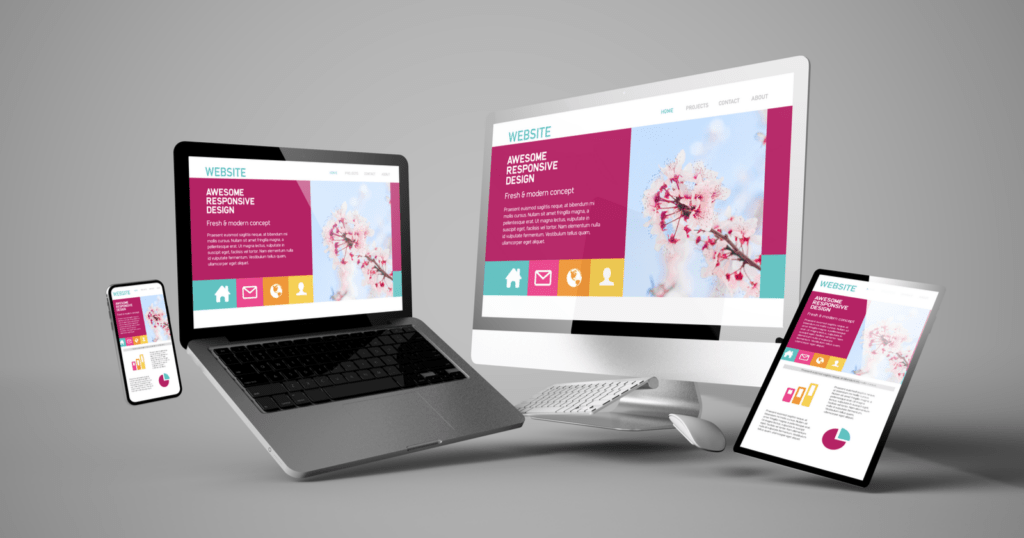Top Trends in Web Site Style: What You Need to Know
Minimalism, dark mode, and mobile-first approaches are amongst the key motifs shaping modern-day design, each offering distinct advantages in individual engagement and performance. Additionally, the focus on ease of access and inclusivity underscores the relevance of creating digital settings that cater to all individuals.
Minimalist Design Aesthetic Appeals
Recently, minimalist layout visual appeals have actually emerged as a leading trend in website style, emphasizing simplicity and performance. This strategy focuses on vital web content and eliminates unnecessary aspects, consequently enhancing customer experience. By concentrating on clean lines, adequate white room, and a limited color combination, minimalist styles promote easier navigation and quicker tons times, which are vital in retaining individuals' interest.
Typography plays a significant role in minimal design, as the choice of typeface can stimulate certain feelings and lead the individual's trip via the content. The calculated usage of visuals, such as top notch photos or refined computer animations, can boost individual engagement without overwhelming the general visual.
As digital rooms remain to progress, the minimalist design principle continues to be pertinent, satisfying a diverse target market. Services adopting this fad are often regarded as modern and user-centric, which can substantially affect brand name perception in a significantly open market. Ultimately, minimalist design appearances supply a powerful service for reliable and enticing website experiences.
Dark Setting Popularity
Embracing an expanding trend among customers, dark setting has actually acquired significant popularity in website design and application interfaces. This layout strategy includes a mainly dark shade scheme, which not only improves aesthetic appeal but additionally lowers eye stress, especially in low-light atmospheres. Customers increasingly appreciate the comfort that dark mode offers, leading to much longer engagement times and an even more delightful surfing experience.
The adoption of dark setting is additionally driven by its perceived benefits for battery life on OLED displays, where dark pixels take in less power. This useful advantage, integrated with the elegant, contemporary look that dark themes offer, has actually led lots of designers to include dark setting options into their tasks.
Additionally, dark mode can produce a sense of deepness and focus, attracting attention to key components of a web site or application. web design company singapore. Therefore, brand names leveraging dark mode can boost individual interaction and create a distinctive identification in a crowded marketplace. With the pattern remaining to rise, incorporating dark mode into internet designs is coming to be not just a choice yet a basic assumption amongst individuals, making it necessary for designers and developers alike to consider this facet in their tasks
Interactive and Immersive Components
Regularly, designers are including interactive and immersive components into web sites to improve customer engagement and create memorable experiences. This fad reacts to the enhancing assumption from individuals for more vibrant and customized interactions. By leveraging features such as animations, video clips, and 3D graphics, sites can attract individuals in, cultivating a much deeper connection with the material.
Interactive components, such as quizzes, surveys, and gamified experiences, urge visitors to proactively take part as opposed to passively consume information. This interaction not just maintains individuals on the website longer yet likewise increases the probability of conversions. why not look here In addition, immersive technologies like digital reality (VIRTUAL REALITY) and enhanced fact (AR) use special possibilities for organizations to display services and products in a much more compelling way.
The consolidation of micro-interactions-- small, subtle computer animations that react to user activities-- additionally plays a critical duty in improving usability. These interactions supply comments, boost navigation, and produce a sense of satisfaction upon completion of jobs. As the digital landscape remains to advance, using interactive and immersive elements will remain a considerable emphasis for designers aiming to develop engaging and efficient online experiences.
Mobile-First Technique
As the frequency of smart phones remains to surge, adopting a mobile-first method has actually become crucial for internet developers intending to maximize user experience. This method emphasizes designing for mobile phones before scaling approximately bigger displays, making certain that the core capability and material come on the most typically made use of platform.
One of the primary benefits of a mobile-first strategy is enhanced performance. By concentrating on mobile style, web sites are structured, decreasing tons times and boosting navigation. This is especially critical as individuals anticipate quick and receptive experiences on their smartphones and tablets.

Availability and Inclusivity
In today's electronic landscape, guaranteeing that internet sites are obtainable and comprehensive is not just an ideal technique but a basic demand for reaching a varied audience. As the internet remains to act as a primary methods of communication and commerce, it is important to recognize the different needs of customers, including those with disabilities.
To attain true availability, web developers should stick to developed guidelines, such as the Internet Material Ease Of Access Standards (WCAG) These guidelines stress the significance of giving text alternatives for non-text content, making sure keyboard navigability, and preserving a logical material framework. Furthermore, inclusive layout techniques extend past conformity; they include creating a customer experience that accommodates different capacities and preferences.
Including features such as adjustable message dimensions, shade comparison options, and screen visitor compatibility not just boosts usability for individuals with disabilities however likewise improves the experience for all customers. Ultimately, prioritizing accessibility and inclusivity fosters a more fair digital environment, urging broader participation and interaction. As businesses increasingly recognize the moral and economic imperatives of inclusivity, integrating these principles right into website layout will certainly come to be a Source vital facet of effective online methods.
Conclusion
